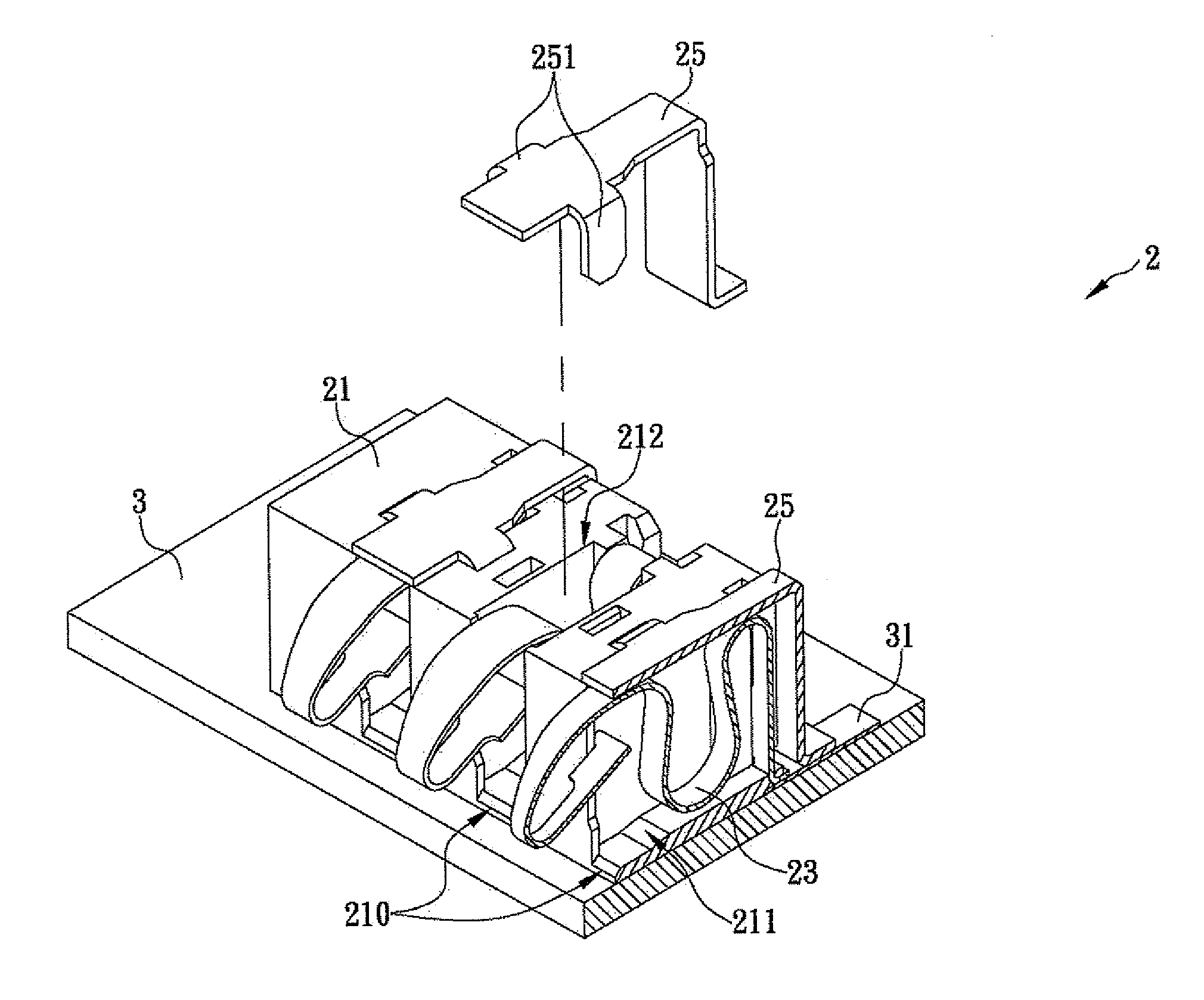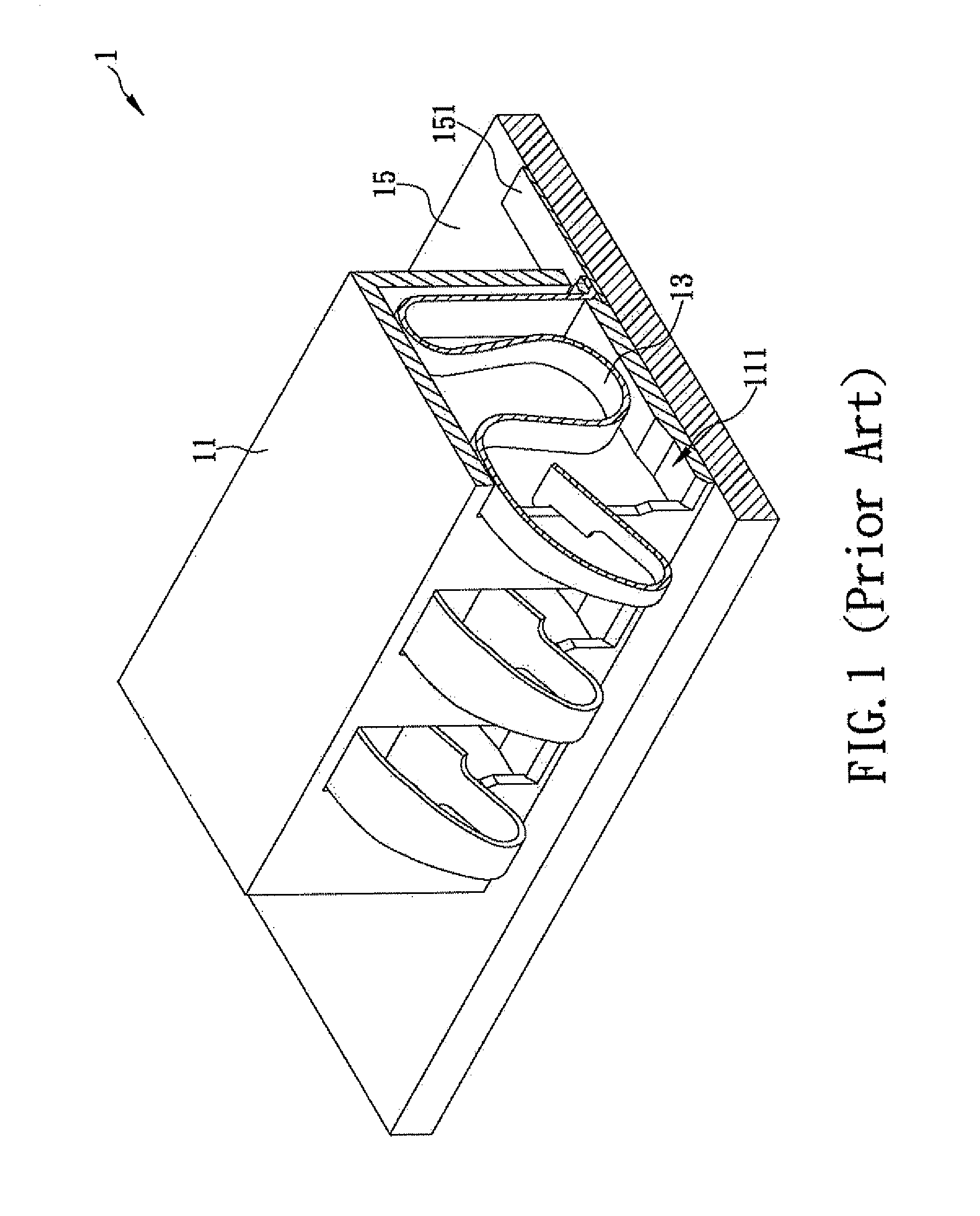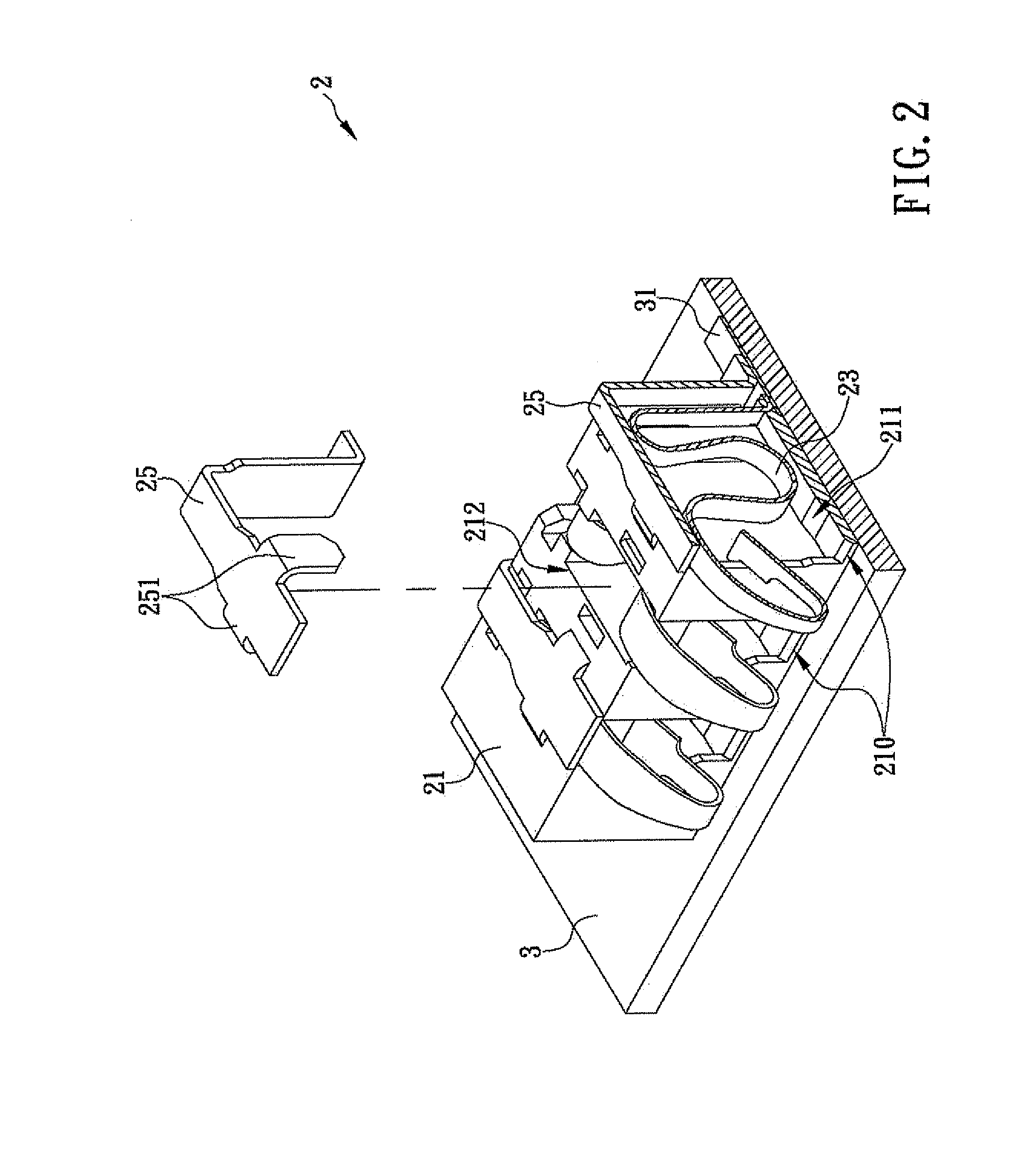High-power connector having heat dissipation structure
- Summary
- Abstract
- Description
- Claims
- Application Information
AI Technical Summary
Benefits of technology
Problems solved by technology
Method used
Image
Examples
first embodiment
[0021]Referring again to FIG. 2, in order to prevent the auxiliary metal plates 25 being pressed from shifting away from their original positions and hindering normal operation of the high-power connector 2, the front section of each auxiliary metal plate 25 is provided with a positioning portion 251. The positioning portions 251 are engaged with the cover 21 to secure the resilient metal plates 25 firmly in position. Thus, the high-power connector 2 in the first embodiment achieves the following advantageous effects:
[0022](1) As the front section and the rear section of each resilient metal terminal 23 are respectively and electrically connected to the front section and the rear section of the corresponding auxiliary metal plate 25, each pair of the connected resilient metal terminal 23 and auxiliary metal plate 25 form a parallel circuit. Given the equation of parallel-connected resistors: total impedance R=(R1*R2) / (R1+R2), where R1 represents the impedance of the resilient metal ...
fourth embodiment
[0028]Reference is now made to FIG. 5. The electrode terminals 61 of a conventional battery 6 may have different shapes in order to meet different circuit requirements. For instance, the electrode terminal 61A has a relatively wide area of contact, and the plural electrode terminals 61 belong to the same line and can therefore be viewed as a single electrode terminal 61. In the present invention as shown in FIG. 5, a connecting plate 751 is provided between the two adjacent auxiliary metal plates 75 to add to the widths of the auxiliary metal plates 75, and the auxiliary metal plate 75A itself has a relatively great width to significantly increase the heat dissipation area of the high-power connector 7. Therefore, the high-power connector 7 of the present invention has wide industrial applicability and can satisfy different circuit design requirements, giving the connector designers or manufacturers a competitive edge in the market.
PUM
 Login to view more
Login to view more Abstract
Description
Claims
Application Information
 Login to view more
Login to view more - R&D Engineer
- R&D Manager
- IP Professional
- Industry Leading Data Capabilities
- Powerful AI technology
- Patent DNA Extraction
Browse by: Latest US Patents, China's latest patents, Technical Efficacy Thesaurus, Application Domain, Technology Topic.
© 2024 PatSnap. All rights reserved.Legal|Privacy policy|Modern Slavery Act Transparency Statement|Sitemap



